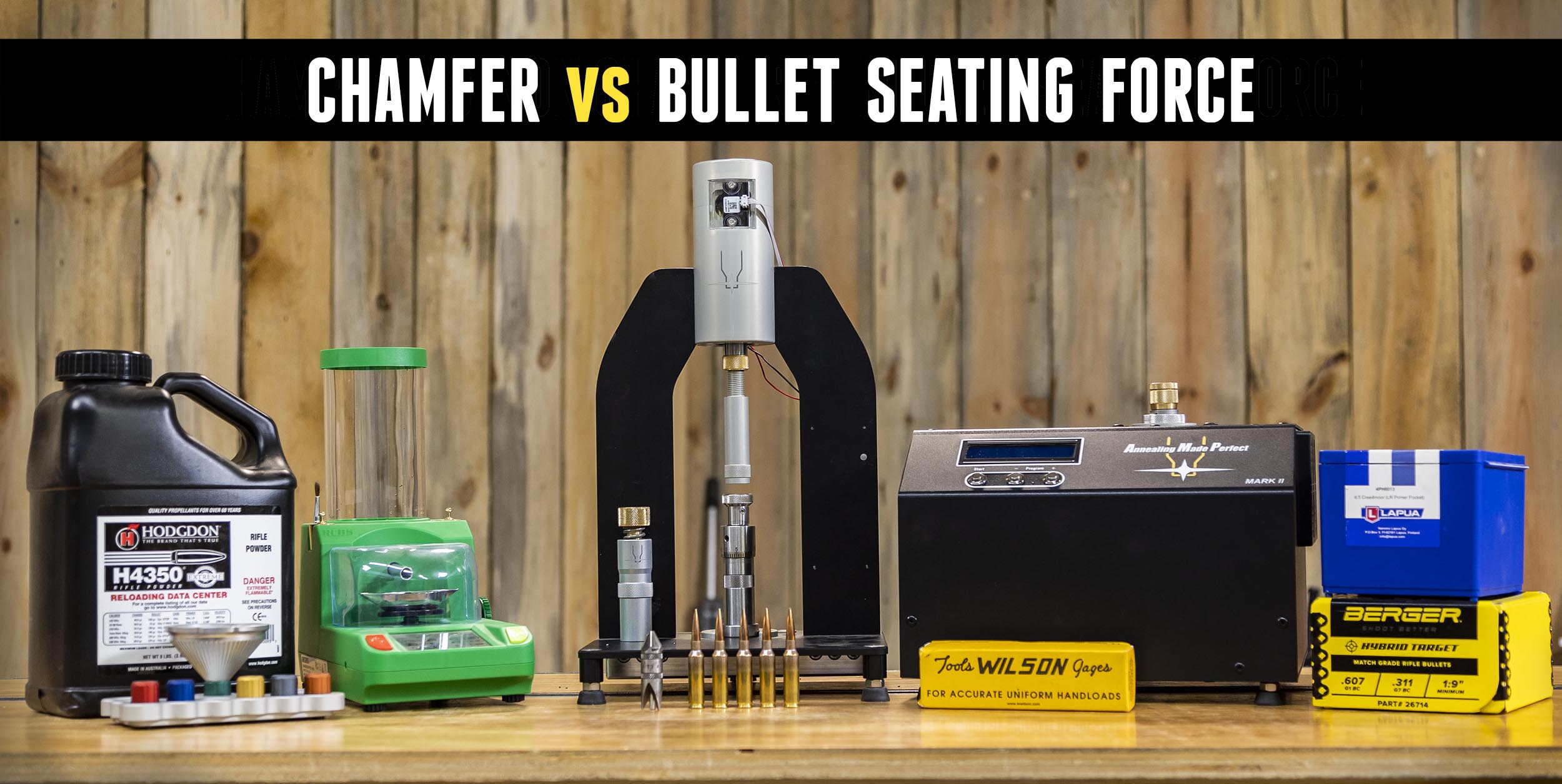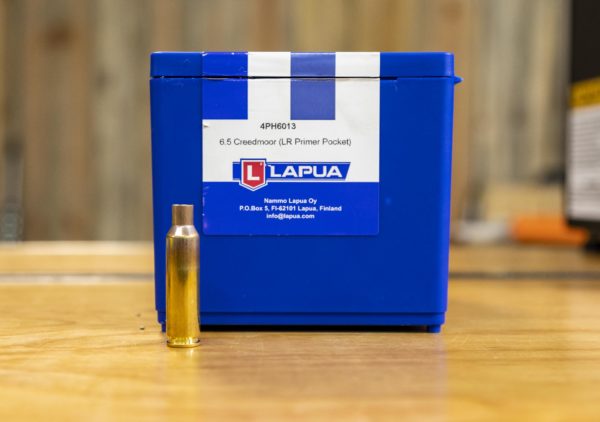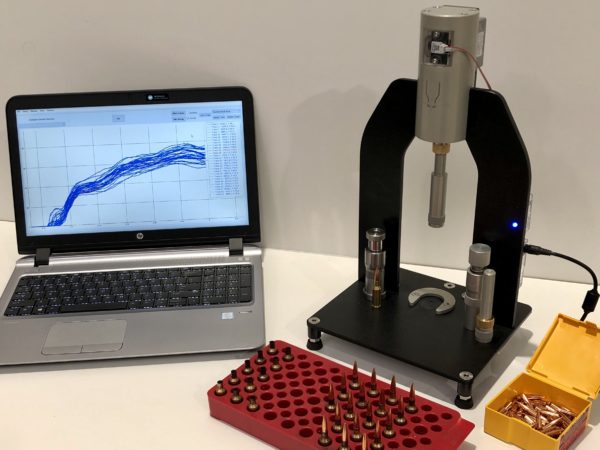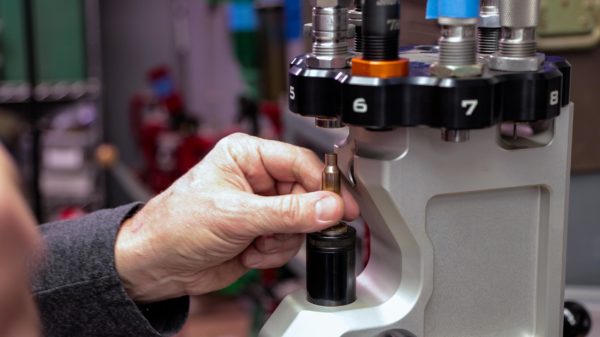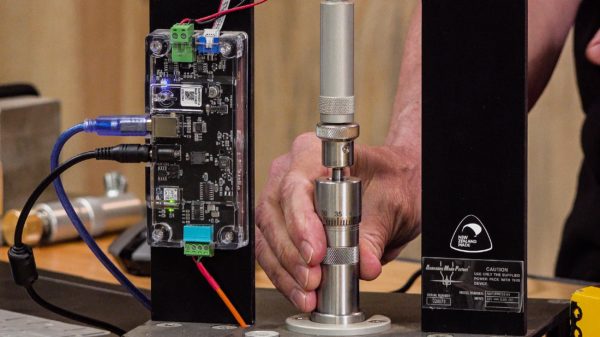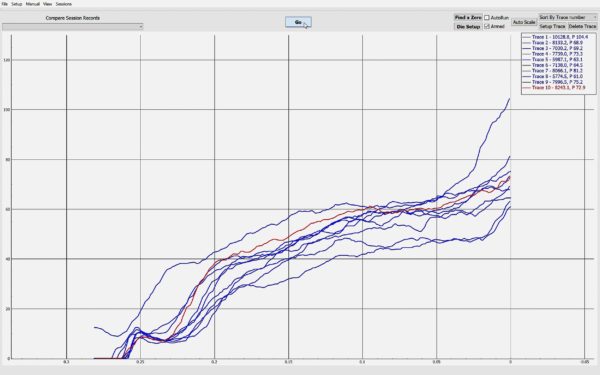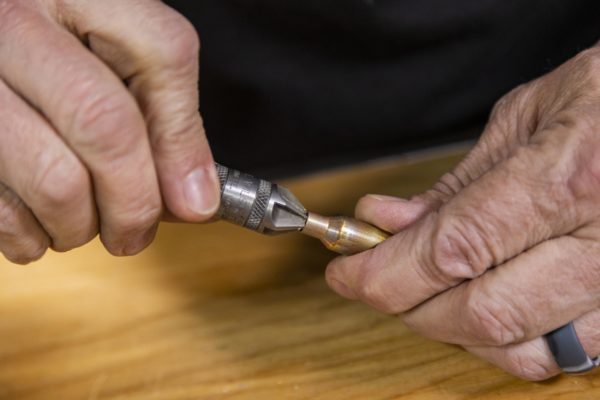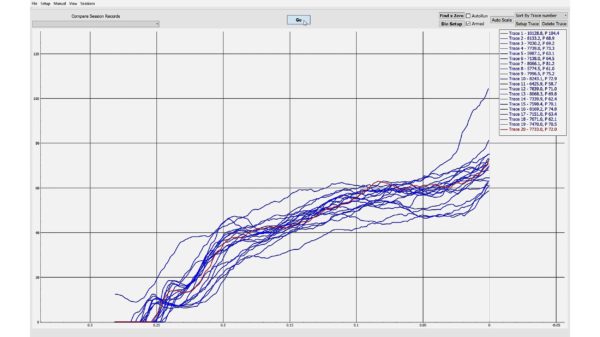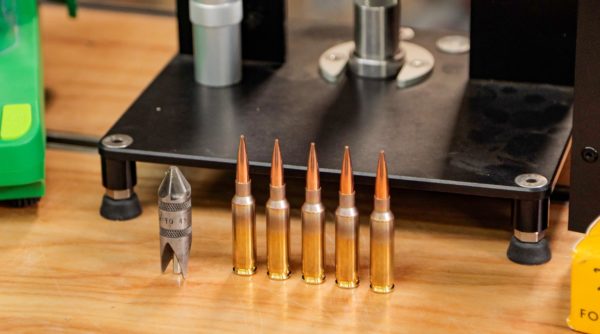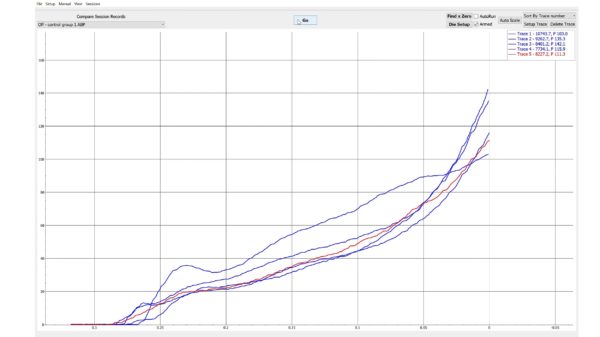Lately we’ve been seeing the AMP Press used for tight quality control from precision reloaders around the world. While you’ve seen our tests on the AMP Press before, in this story, we single out 1 variable: Chamfering Case Mouths.
Disclaimer
Ultimate Reloader LLC / Making with Metal Disclaimer: (by reading this article and/or watching video content you accept these terms). The content on this website (including videos, articles, ammunition reloading data, technical articles, gunsmithing and other information) is for demonstration purposes only. Do not attempt any of the processes or procedures shown or described on this website. All gunsmithing procedures should be carried out by a qualified and licensed gunsmith at their own risk. Do not attempt to repair or modify any firearms based on information on this website. Ultimate Reloader, LLC and Making With Metal can not be held liable for property or personal damage due to viewers/readers of this website performing activities, procedures, techniques, or practices described in whole or part on this website. By accepting these terms, you agree that you alone are solely responsible for your own safety and property as it pertains to activities, procedures, techniques, or practices described in whole or part on this website.
About the AMP Press
From our AMP Press Overview Story:
From the AMP Press Product Page:
-
- Load cell: AMP Press comes equipped with a precision load cell which delivers exact weight measurements up to 200 kilograms. The face of the load cell is surrounded by a retainer which guides the die to the center of the cell. This ensures repeatable measurements every time. The load cell is highly accurate. Minute case to case variations can be magnified and displayed in incredible detail. The load cell face is free floating. This ensures that no binding takes place when the ram presses the die down onto load cell and that everything remains centered.
-
12V Motor: The ram on AMP Press is driven by a high torque, DC motor. This ensures that a repeatable stroke in both speed and force is applied to the die when seating. This removes the human error which occurs when operating conventional arbor presses. The 12V DC motor means the press can be easily powered by batteries. This allows its use in more remote locations such as at a range.
-
Distance sensor: The position of the ram is calculated using a position sensor, which is accurate to 0.001″. This allows the distance to seat bullets to be displayed against force for the first time. This is especially useful in highlighting discrepancies such as trim length and chamfer consistency. It also allows for the calculation of “Total Work” to be applied to the plot as an option to sort by for the first time.
- Bluetooth: AMP Press is Bluetooth capable allowing for wireless communication to your preferred device. Bluetooth will be enabled after the initial release of AMP Press. In the interim, computer connection will be by USB cable. Note: the initial release of AMP Press will be PC only. Mac software will follow.
Experiment Overview
The Amp Press takes force readings during bullet seating. What this allows us to do, is isolate specific characteristics and see how they effect bullet seating force. In this experiment, we’ve prepped every piece of brass the same way, with one variable – chamfering case mouths. We can take a look at our brass before chamfering, and see how much force is applied in order to seat the bullet. Then, we can take a look at our chamfered cases to see if chamfering helped with bullet seating force – either minimizing the force, or closing the gap in forces, giving our bullets a more consistent seat.
Preparing the Brass
We are starting with Brand New Lapua 6.5 creedmoor brass. Before beginning the experiment, we:
- Mandrel sized with the L.E. Wilson Expanding Mandrel Die
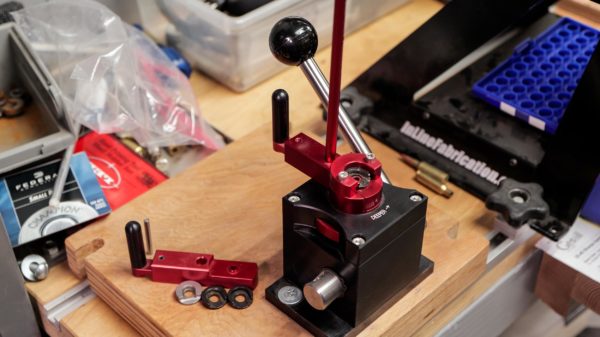
- Primed with the Primal Rights Competition Primer Seater
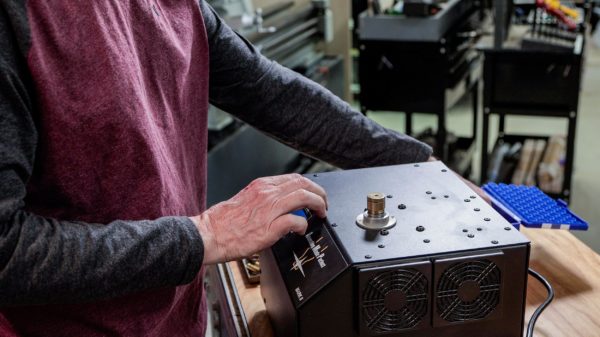
- Annealed on the AMP Mark II Annealer
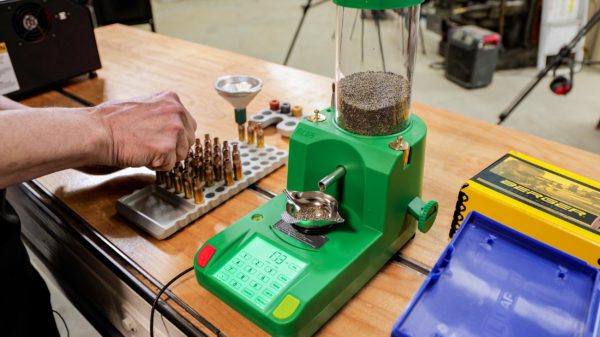
- Charged our cases with H-4350 on the RCBS Chargemaster Link
Conducting the Experiment
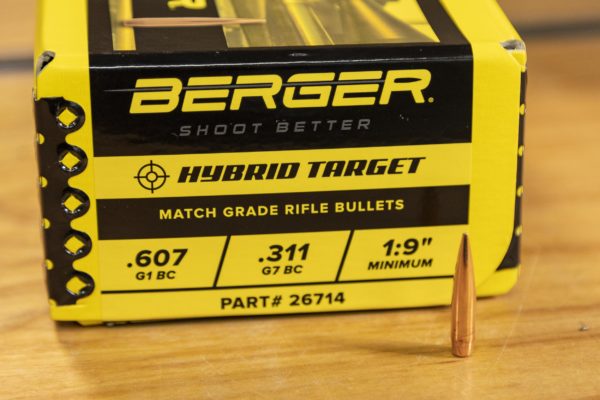
Now that we’ve prepped our Brass, we’re ready to start seating bullets. Here, we are loading for a reliable well-known load so we are using Berger’s 140 grain Hybrid Bullets. Let’s take a look at our first test group, non chamfered cases.
Not Chamfered
We seated 10 bullets into non chamfered Lapua 6.5 Creedmoor brass. This became our base line for seating pressures. Now that we have our control group, it’s time to take a look at what our seating pressures do after chamfering the case neck.
Chamfered
We seated 10 bullets into 10 chamfered Lapua 6.5 Creedmoor brass. As we watched the graph, we noted a few outliers. Besides these outliers, we noticed the seating forces did not deviate from the control group!
The Results, and Conclusion
To my surprise, there was little to no difference between the cases that were not chamfered and the cases that were chamfered. This is in stark contrast to a previous experiment which is summarized below. At the end of the day, the numbers do the talking. Chamfering has been a life long personal comfort when it comes to reloading. While I will continue to chamfer my brass just for peace of mind, the real story behind the data shows that bullet seating forces are not changed by chamfering.
Different Results from Previous Experiment
The last time we tried Chamfering the case mouths with the AMP Press, the difference between cases with and without case mouth chamfering were much more drastic: (most likely due to the fact that military 308 brass was used)
308 Test 1, Baseline: Full Length Sizing + Mandrel Neck Expansion
Brass was spray lubed, full length sized and then mandrel sized with a Wilson Mandrel die. Brass was then tumbled in walnut media to remove the lube. This is important to note as media dust residue will have an effect on the seating forces.
Results from Baseline (click/tap to enlarge):
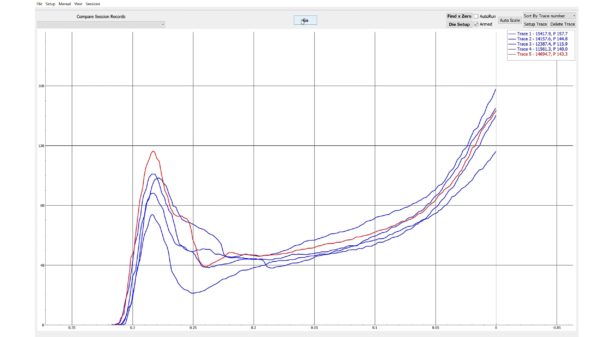
This graph result showed what we expected. The initial spike in force was seen as the bullet started movement and ented the neck. This is followed by a dip and then progressive increase which is typical for the bullet seating process.
308 Test 2, Baseline + Inside Neck Chamfer
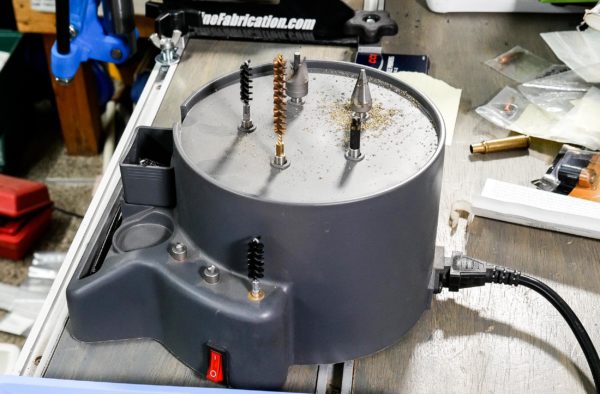
We added an inside neck chamfer using the Lyman Case Prep Xpress.
Results from the Inside Neck Chamfer (click/tap to enlarge):
You can see based on the differences observed in the 308 Winchester graphs that chamfering made a big difference in bullet seating forces. And that’s quite different compared to what we saw with the 6.5 Creedmoor cases!
Get the Gear
- Lapua 6.5 Creedmoor Large Rifle Primers Pocket Brass
- Berger 140 grain Hybrid Bullets
- AMP Press
- L.E. Wilson Expanding Mandrel Die
- Primal Rights Competition Primer Seater
- AMP Mark II Annealer
- Hodgdon H-4350
- RCBS Chargemaster Link
Don’t miss out on Ultimate Reloader updates, make sure you’re subscribed!
Thanks,
Travis Fox
